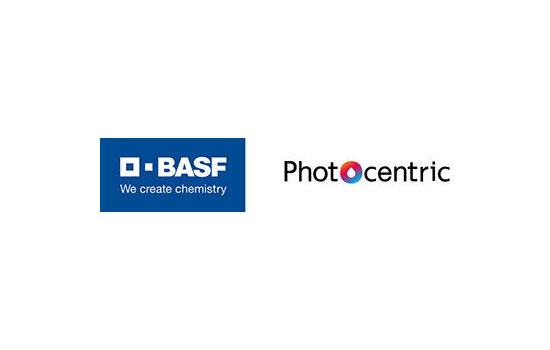BASF and Photocentric’s solution to overcome the limitations of Additive Manufacturing for mass manufacture.

In 2018 Photocentric, UK-based photopolymer resin and LCD printer manufacturer, and BASF, one of the largest chemical producers in the world, announced their collaboration to create the needed photopolymers and hardware to enable the 3D custom mass manufacture of parts.As both companies prepare to showcase at Formnext 2019, we bring you the very latest on their strategic alliance to develop solutions for industrial 3D printing
Addressing the issues that exist with 3D printing today
Printed parts are not functional; are too expensive and you can’t make them in scale. These are the issues that Photocentric and BASF are currently addressing through a combined disruptive solution.
To date, the 3D printing industry has only answered the needs of rapid prototyping and machine aids. The mechanical properties of materials have been limited by formulations that enable only functional prototypes for testing with no genuine end-use. These components are not yet sufficiently stable against UV, humidity, aggressive chemicals, or heavy mechanical stress.
Arnaud Guedou, Business Director of Photopolymer Solutions at BASF-3D Printing Solutions says:
“New chemistry needs to be invented, developed and tested to meet the demanding requirements of today’s additive-based manufacturing. What’s more, the development of this technology needs to be very closely linked to the specific requirements of the respective application.I’m proud to say BASF fulfils all requirements better than any other chemical sector company. Combining this and our expertise in 3D printing with Photocentric’s leading-edge hardware and BASF’s deep chemical speciality expertise, together we have created the best solution to genuinely engage and support major additive manufacturing customers.”
BASF / Photocentric solution to Industrial Printing: A scalable, cost-effective manufacturing process for a wide variety of industrial customers.
Challenging the status quo of 3D printing in manufacturing, the innovative combined solution of cutting-edge hardware, specialist chemistry and application led software will allow functional end-use parts to be produced in scale at an affordable price point; using LCD screens.Photocentric’s print hardware addresses the issue of volume in their next generation of large format LCD printers.
Paul Holt, Technical Director of Photocentric explains:
“The use of LCD screens is the only truly scalable mechanism of encoding digital light in volume across an entire xy platform – that could be as big as a 98” TV screen, or as small as a number of high-resolution virtual reality headset screens held in an array… you can create as many objects as you want at the resolution you want in the entire xy plane.”
The issue of cost is mutually addressed by both Photocentric and BASF; collectively offering industrial end-user prices that are much closer to those of injection moulding than current high prototyping costs.The development of new chemistry from BASF tackles the fundamental problem of non-functional parts. Printable materials fit for industry, where mechanical properties are stable against UV, humidity, aggressive chemicals and heavy stress, are starting to be introduced to the growing landscape of additive manufacturing.“Combining our 3D printing expertise with leading-edge hardware by Photocentric, and BASF’s decades of chemistry, production and application expertise, today we offer the most innovative and industry-disruptive solutions to genuinely engage major additive manufacturing customers.” Arnaud Guedou.
Win / Win
Photocentric provide the disruptive 3D print hardware with slicer software, BASF provide the specialised materials.
All built with the vision of enabling custom mass manufacture, Photocentric’s next generation of large format industrial printers include the recently released Liquid Crystal (LC) Magna, and the upcoming LC Maximus – to be released Q2 2020. LC Maximus will be the largest LCD printer to be available on the market with a 4K screen and 800mm build height.
BASF introduce their first two industry formulations developed and optimised to work with Photocentric’s unique LCD technology: BASF ST45B and FL300W. Where ST45B is a highly reactive photopolymer, formulated for applications where tough multipurpose parts are needed, FL300W has been designed to offer exceptional flexibility and high tear strength.